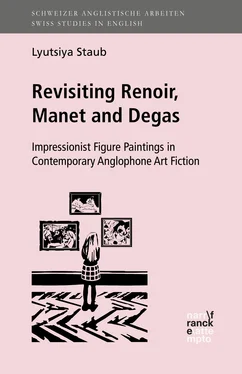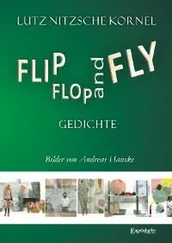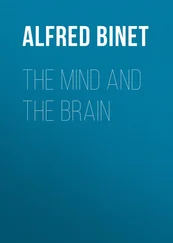Most recent studies on picture perception acknowledge two simultaneous experiences that occur in the process of ‘looking into’ a picture. These experiences are directly related to the dual nature of pictures: “pictures can generate an in-depth spatial impression of the scene depicted while at the same time appearing as flat two-dimensional surfaces hanging on the wall” (Mausfeld 20). Indeed, in addition to depicting objects in spatial relationships, and representing events, pictures remain physical objects, with a distinctive size and shape as determined by their canvases and frames, an individual location in physical space and an exclusive price value. In other words, a work of art presupposes a clear distinction between three-dimensional and two-dimensional perceptual space – the former is a pictorial space that is perceived in depth, the latter is the understanding of the painting as a physical object perceived as being flat in the real space outside the canvas. While looking at an artwork the observer realises and accepts both these aspects. Therefore, the dual nature of picture perception must be taken into account when analysing static pictorial images and any represented pictorial space (the illusionary space that provides an idea of depth and distance on the flat canvas surface). Mausfeld discusses the challenges of the dual nature of any given picture and distinguishes between two general aspects of this notion: the problem of “cue integration” and the problem of “conjoint representation” (21). The former relates to the concept of depth or spatial representation, the three-dimensional effect of which is analysed in visual psychophysics. The latter refers to the simultaneous experience of two different types of objects, “each of which seems to thrive in its own autonomous spatial framework” (25). On the one hand, there is “the picture surface as an object – with corresponding object properties such as orientation or depth” (25); on the other, “the depicted objects themselves with their idiosyncratic spatial properties and relations” (25). The observer is therefore involved in the internal complexity of a relationship between pictorial space and perceived physical space, constantly switching back and forth between them but also conscious of the painting as a physical object in and of itself. Moreover, the viewer’s interaction with an art object unlocks the cultural dimension of picture perception (19). The first interaction comprises intricate combinations of “perceptual faculty and various interpretative faculties” (19); the second is culturally bound and, as such, is able to facilitate myriad interpretations. Seen in this light, picture perception appears to be radically different to the experience of perceiving non-pictorial static objects in space. Bearing this in mind and turning to the practice of visual arts in narrative fiction, it can be assumed that intermedial artefacts incorporating the ekphrasis of real works of art suggest an altogether different experience to those based on the ekphrasis of fictional artistic creations. In contemporary art fiction art objects are embedded into a narrative of the process of their creation and, consequently, the events surrounding it. As this information is only partially based on documentary recollection, which is accessible via painters’ letter correspondence, archival materials of art exhibitions of the time, chronicles, and art-historians’ testimonies, it becomes fictional. Thus, while creating a fictional account of the past, art narratives pursue meaning-making of the artworks through their re-presentation.
The meaning of any painting can be changed according to what one sees or prefers to see in it. According to Alberti, a painting contains three divisions: circumscription, composition and reception of light (68). Circumscription stands for the way the objects represented in the painting are seen and outlined by the painter (68); composition is what the painter creates by “drawing [the planes of the observer body] in their places” (68); finally, reception of light is the result of the representation of “the colours and the qualities of the planes” (68). In order to produce an image the painter goes through the toilsome process of invention, selection and elaboration: “When an artist chooses a given site for one of his landscapes he not only selects and rearranges what he finds in nature; he must reorganize the whole visible matter to fit an order discovered, invented, purified by him” (Arnheim, Visual Thinking 35). By using circumscription, composition and reception of light the painter transforms what is seen and projects his/her personal interpretation onto the canvas, while the viewer is invited to test “those contents against his perception and his cognition of the visible world” (Bilman 9). Gombrich points out that the form of representation “cannot be divorced from its purpose and the requirements of the society in which the given visual language gains currency” (90). Just as the creation of an artwork takes time to be processed, the perceiving of this artwork is not accomplished immediately. According to Arnheim,
the observer starts from somewhere, tries to orient himself as to the main skeleton of the work, looks for the accents, experiments with a tentative framework in order to see whether it fits the total content, and so on. When the elaboration is successful, the work is seen to repose comfortably in a congenial structure, which illuminates the work’s meaning to the observer. ( Visual Thinking 35)
In reference to perception and understanding of a painting, Goodman suggests that “what a picture is said to represent may be denoted by the picture as a whole or by a part of it” (28). A serious weakness with this argument, however, is the fact that seeing a part of a painting or analysing even just one detail in the painting may influence the interpretation of the whole: “every detail of information about the representational content of a picture not only adds to what we know but changes what we see” (Arnheim, New Essays 7). Therefore, the painting has to be seen as a whole, separated into segments, which are then examined and re-seen as a whole.
Arnheim maintains that “[t]he intellect has a primary need to define things by distinguishing them, whereas direct sensory experience impresses us first of all by how everything hangs together” ( New Essays 65). As noted by Berger, all the elements of a painting “are there to be seen simultaneously” (26); however, the viewer requires time to study its elements, and “whenever he reaches a conclusion, the simultaneity of the whole painting is there to reverse or qualify his conclusion” (26). Arnheim argues that the thinking process is the essence of visual perception. By thinking he means such cognitive operations as “active exploration, selection, grasping of essentials, simplification, abstraction, analysis and synthesis, completion, correction, comparison, problem solving, as well as combining, separating, putting in context” ( Visual Thinking 13). These cognitive processes are activated not only while looking at a painting but also while reading a text, thus involving “the conceptualisation and interpretation of the external world, which require the viewer’s and the reader’s selective, vigilant attention, memory, and concentration” (Bilman 40). Bilman makes a direct comparison between the experience of looking at a painting or reading a text and the experience of gaining knowledge about “the physical objects of the exterior world, about man’s subjective states of mind, and his existential condition” (40).
Cognitive psychologists who examine the relationship between reading and looking try to prove that neither is the painting only perceived holistically, nor is the literary text solely perceived sequentially. In analysing eye movement, Kolers concludes that “in reading and looking, people use many different inspection strategies, have many different options available, to achieve approximately the same end – and interpretation or comprehension of the object being examined” (155). As Bilman notes: “The movement of the eye following the words depicts the process of moving from detail and down the page which conveys the kinetic impression of seeing” (101). Reading a painting and reading a text are quite similar insofar as the interpretation of both involves “seeing wholes, seeing parts, and reseeing wholes, even though the sequence of these acts and the amount of time elapsed between them differ in reading paintings and reading literary texts” (Torgovnick 34). According to Gilman, “both experiences consist of two phases that might be called ‘reading’ and ‘seeing’ – a processional and an integrative, or reflective, phase which together generate understanding” (10). Gilman explains the experience of reading a text in the following way:
Читать дальше












